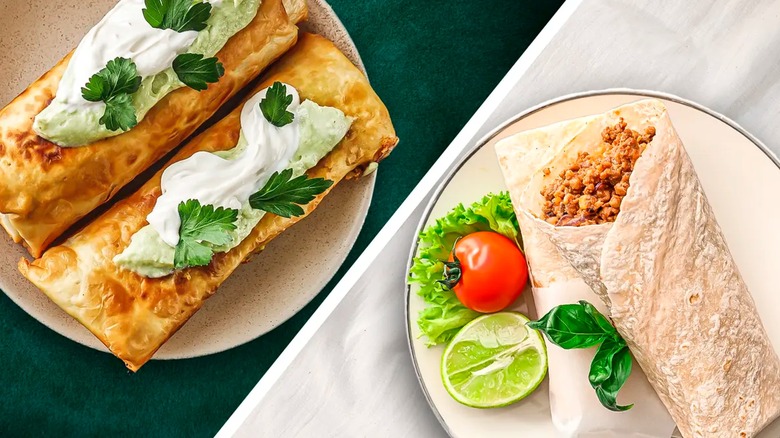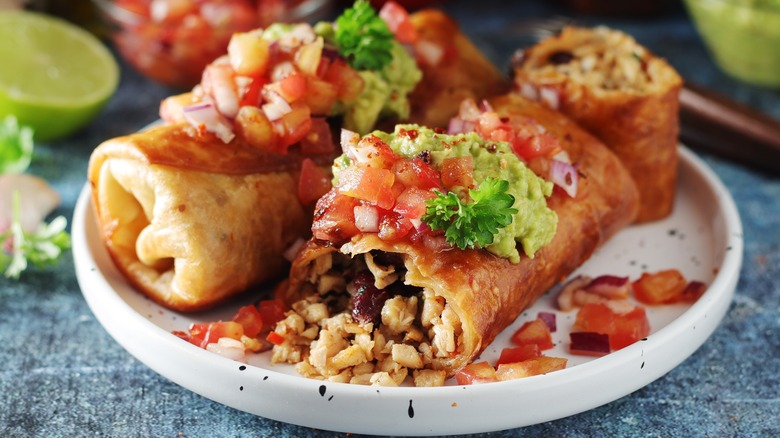The Differences Between Chimichangas And Burritos
Whether visiting your favorite Mexican-style restaurant or making your own meal at home, you may find yourself wavering between chimichangas and burritos. While both dishes have a lot in common, there are some key differences between them. The biggest distinction lies in the preparation, as chimichangas are wrapped and fried. As for burritos, fillings are added to a warmed tortilla, which is then folded and served.
While standard recipes usually involve flour tortillas, some sort of meat, cheese, rice, and beans, both chimichangas and burritos are pretty versatile when it comes to fillings. Additions like guacamole are also common, but how they're incorporated can differ. Cold ingredients such as salsa, pico de gallo, and guac are used to top chimichangas, whereas they can be incorporated directly into burritos.
The volume of fillings is another notable difference. The last thing you want is for your chimichanga ingredients to spill out into the hot oil, so it's best to use fewer ingredients than you would when making a burrito. While burritos can accommodate more fillings than chimichangas, using too much is one of many mistakes people make when making wraps. In general, a 10-inch tortilla can only accommodate about 1 ½ cups of meat and other fillings before becoming unstable, so leave the baby-sized burritos to the pros at Chipotle.
American vs Mexican origins
When it comes to the origins of burritos, the preparation was probably conceived in northern Mexico, although the details are somewhat murky. It's believed that burritos were developed using the combined cooking techniques and cuisines of Mexico and Europe, with an assist from Arabic culinary influences that contributed to the creation of flour tortillas. The dish received its first official mention in 1895, when it appeared in an edition of "Diccionario De Mejicanismos" ("Dictionary of Mexicanisms"), which provided information on the common vocabulary of Mexican Spanish. The mighty burrito really hit its stride when the demand for on-the-go meals increased during the early 1900s.
As for chimichangas, the dish likely originated in Arizona, and it's commonly claimed that the invention was actually a mishap. When Tucson restaurant owner Monica Flin was jostled while preparing a burrito in the early 1920s, she lost her grip and dropped it into a nearby deep fryer. Although the accident turned out to be a fortuitous one, Flin was initially irritated and held back a particular Spanish curse word due to the presence of children, which resulted in her coining the phrase "chimichanga." While this origin story may be a bit fanciful, chimichangas now rank among such beloved Tex-Mex recipes as nachos and steak fajitas.

